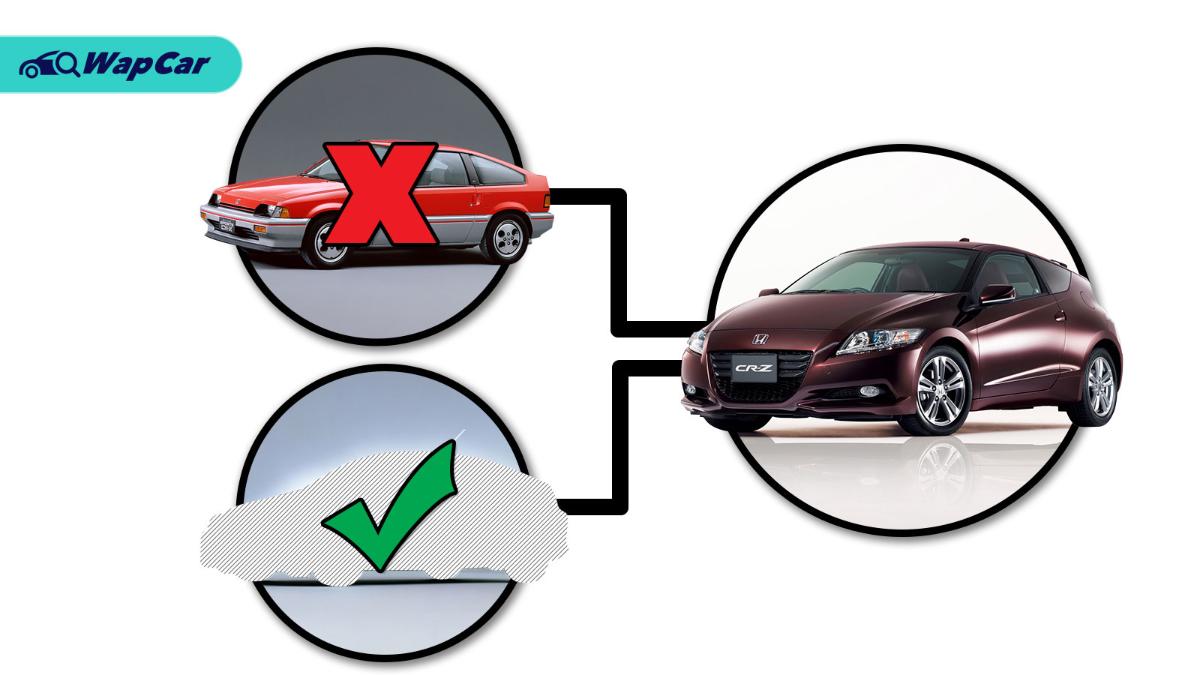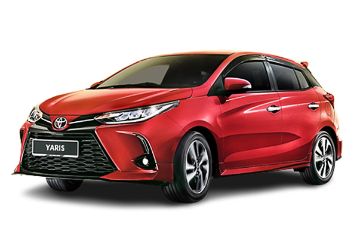![Forget the CR-X, the Honda CR-Z was a fine successor to another Honda legend 01]()
From the BMW 8 Series to the Toyota Supra, it seems every old name is making a comeback. Even relatively new ones too. Or if the recent news of Honda trademarking the CR-Z name is anything to go by.
Calm down now. As we have pointed out previously, companies do trademarks simply to ensure nobody else uses the name. There is little evidence to support the claim many sites are banging out that a second-generation CR-Z is imminent.
![Forget the CR-X, the Honda CR-Z was a fine successor to another Honda legend 02]()
However, the news does warrant a little introspection to ask the important question. Was the CR-Z good enough to warrant a comeback in the first place?
There are many Malaysians who would love to see the little hybrid coupe return. And that was because Malaysia is one of the few places in the world where it sold well.
![Forget the CR-X, the Honda CR-Z was a fine successor to another Honda legend 01]()
When it launched in 2011, Malaysians were completely blown away at the prospect of a sub-RM120,000 Honda coupe with a manual option. Honda Malaysia originally targeted to move a hundred units in its first month of sale. They were inundated with over three times that number in bookings.
So, what made Malaysia so special for the CR-Z to flourish? Well, the same reason why Malaysia became one of the biggest markets in the world for Audi’s A6 Hybrid. You can thank our strange short-lived hybrid promoting tax exemption policy for that.
![Forget the CR-X, the Honda CR-Z was a fine successor to another Honda legend 02]()
Elsewhere in the world, where the CR-Z had less generous tax benefits and had to compete with other performance models on equal grounds, it faltered. Honda’s brave new coupe had the sporty look its performance couldn’t cash, leaving many fans of the concept disappointed.
The consensus among critics was that the CR-Z never quite lived up to the CR-X hatchback. But name relation aside, that was just an unfair comparison, to begin with.
![Forget the CR-X, the Honda CR-Z was a fine successor to another Honda legend 03]()
The CR-X might have jumpstarted the Type R performance in an econobox image before the Type R even existed. However, the rosy regards enthusiasts prized the original for was thanks to its cheap second-hand values and aftermarket potential.
It also didn’t help that the CR-Z weighed 1,200kg, while its electric motors did nothing to make it “VTEC kicked in” fast. Armed with an inoffensive 1.5-litre SOHC four-banger, and a 0-100km/h in the 8 to 10sec range, it was never going to deliver a new Honda renaissance.
![Forget the CR-X, the Honda CR-Z was a fine successor to another Honda legend 04]()
That said, the CR-Z comparison to the CR-X and performance Hondas was somewhat misleading. It might be related by name, but in spirit, the CR-Z had more in common with another less known but equally legendary Honda, the original Insight.
![Forget the CR-X, the Honda CR-Z was a fine successor to another Honda legend 05]()
Now, you might contest that there already was a proper Insight successor - it was called the second-generation Insight and it was sold alongside the CR-Z. That particular Insight was a humdrum family car masquerading as a poorer copycat to the Toyota Prius. It wasn’t the trailblazing spaceship from another dimension the original was.
![Forget the CR-X, the Honda CR-Z was a fine successor to another Honda legend 06]()
Released in 1999, the original Honda Insight was a car so doggedly focused on efficiency that it held the US EPA title for the most fuel-efficient non-plug-in hybrid for more than 15 years. It became a favourite among a sect of drivers known as the ‘hypermilers’.
![Forget the CR-X, the Honda CR-Z was a fine successor to another Honda legend 07]()
Hypermilers are a strange breed of drivers who would catalogue every drop of fuel pumped and kilometre travelled. Then risk their lives drafting lorries so that they could achieve a sub-5L/100km run. I heard one of them even became the Head of Content at Wapcar.
To them, the Insight was everything that hypermilers could have asked for, which was good because as a Honda the driving experience wasn’t quite up to par. It was certainly no canyon carver with handling that was as slippery as its low drag coefficient.
![Forget the CR-X, the Honda CR-Z was a fine successor to another Honda legend 08]()
The interior too was as well-furnished as a 1960s space capsule. The engineering might have been bleeding edge, but everything else about the original Insight was for the dedicated. In many respects, the CR-Z is a better follow-up of the Insight. Only this time made for general audiences.
![Forget the CR-X, the Honda CR-Z was a fine successor to another Honda legend 09]()
The CR-Z’s handling was sharper and more resolved, allowing you to hypermile around corners too instead of just the straights. Its space-age interior was well-appointed with working ergonomics and it had a manual to boot, just like the original. Not to mention the CR-Z looks just as distinctive and far ahead of its time as the Insight.
![Forget the CR-X, the Honda CR-Z was a fine successor to another Honda legend 10]()
Alas, in either CR-X or Insight context, the CR-Z never had the bones to win over enthusiasts or hypermilers. It was too slow for one, too heavy and inefficient for the other, and too odd for mainstream buyers.
![Forget the CR-X, the Honda CR-Z was a fine successor to another Honda legend 11]()
While Honda devotees weren’t biting, neither were the customers. Sales for the CR-Z peaked worldwide in its first year of sale at 33,745 before continuing a downward trajectory thereafter. Not even the combination of a Honda manual hybrid coupe could get customers to care.
![Forget the CR-X, the Honda CR-Z was a fine successor to another Honda legend 12]()
As such, it is unlikely that Honda will make a CR-Z successor anytime soon. The small affordable coupe market is a shrinking and hardly profitable one. Even a giant like Toyota had to partner with Subaru to bring the 86/BRZ to market. And you'd think that 86 name is a license to print money in itself.
![Forget the CR-X, the Honda CR-Z was a fine successor to another Honda legend 13]()
Even if Honda were to throw a wild card and make a successor in either hybrid or all-electric form, it might not even make a business case for itself in Malaysia. Without the early-2010’s hybrid tax exemptions, a successor would be prohibitively expensive to import.
![Forget the CR-X, the Honda CR-Z was a fine successor to another Honda legend 14]()
Towards the end of 2014, as exemptions were lifted, Honda Malaysia increased the CR-Z’s price by as much as RM65,000. Sales evaporated and shortly thereafter the CR-Z was withdrawn from the market, bringing an end to one of the strangest success stories in Malaysia.
Many might not know it, but the original Honda Insight was an exceptional car that could only have been made in that particular era and can never be truly repeated. To find out more, head on to The Motor Muse.






















